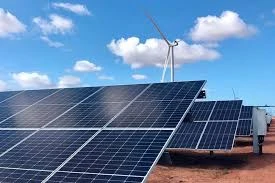cost of hybrid solar system
Understanding the Cost of Hybrid Solar Systems
As the world increasingly shifts towards sustainable energy sources, hybrid solar systems have emerged as a viable option for both residential and commercial energy needs. A hybrid solar system combines solar photovoltaic (PV) technology with other energy sources, such as wind turbines or diesel generators. This synergy not only helps in optimizing energy production but also reduces reliance on fossil fuels. However, understanding the cost implications of investing in such systems is crucial for potential users.
What is a Hybrid Solar System?
A hybrid solar system integrates solar energy generation with other forms of energy production to create a more reliable and flexible energy solution. Typically, it incorporates solar panels, energy storage solutions (like batteries), and alternative energy sources, ensuring that power supply remains consistent even when sunlight is insufficient. This type of system is particularly popular in remote areas where grid access may be limited or in regions with variable weather patterns.
Cost Breakdown of Hybrid Solar Systems
The overall cost of a hybrid solar system can be broken down into several key components
1. Solar Panels The primary component of any hybrid system, solar panels convert sunlight into electricity. The cost of solar panels has significantly decreased over the past decade due to technological advancements and increased production. On average, the cost of solar panels can range from $0.50 to $1.00 per watt, depending on the quality and brand.
2. Energy Storage Batteries are crucial for hybrid systems, allowing users to store excess energy generated during sunny periods for use during cloudy days or at night. Lithium-ion batteries, which are the most commonly used type for solar storage, can be expensive, often costing between $300 to $700 per kilowatt-hour (kWh) of storage. However, the investment in energy storage enhances the overall efficiency and reliability of the energy supply.
3. Inverters Inverters are necessary to convert the direct current (DC) produced by solar panels into alternating current (AC), which is used by most household appliances. The cost of inverters can range from $1,000 to $3,000, depending on their capacity and capabilities.
cost of hybrid solar system

4. Installation Costs Hiring professionals for installation can add significantly to the overall expenses. Installation costs depend on various factors, including the complexity of the system, the type of equipment used, and local labor rates. On average, installation can account for 10% to 20% of the total cost of the hybrid solar system.
5. Permitting and Inspection Fees Before installation, obtaining the necessary permits and inspections may incur additional costs. These fees can vary widely based on local regulations and requirements but should be factored into the overall budget.
6. Maintenance Costs While hybrid solar systems typically require minimal maintenance, occasional inspections and repairs are necessary to ensure optimal performance. Budgeting for maintenance can help in mitigating unexpected expenses down the road.
Return on Investment (ROI)
Investing in a hybrid solar system can provide substantial financial benefits over time. Although the initial investment may be significant, many users find that the savings on monthly utility bills help recoup these costs within a reasonable timeframe. Additionally, various government incentives and rebates can further offset the installation costs, enhancing the ROI. In many cases, users can expect to see a return on investment within 5 to 10 years, after which they can enjoy free electricity for the lifespan of the system, which can last 25 years or more.
The Environmental Impact
Beyond financial considerations, the environmental advantages of hybrid solar systems are substantial. By reducing dependence on fossil fuels, these systems contribute to lower carbon emissions and promote sustainable energy practices. As society becomes more environmentally conscious, investments in hybrid solar systems are likely to reflect consumers’ commitment to a greener future.
Conclusion
In summary, while the cost of a hybrid solar system can be considerable, the long-term benefits—both financial and environmental—make it a worthy investment for many homeowners and businesses. Understanding the various components contributing to the overall cost is essential for making an informed decision. By carefully evaluating energy needs and available incentives, individuals can take a significant step towards energy independence and sustainability through hybrid solar systems.
-
String Solar Inverter: The High-Efficiency Solution for Smart Solar EnergyNewsJul.14,2025
-
Revolutionizing Rooftop Energy with the Power of the Micro Solar InverterNewsJul.14,2025
-
Power Independence with Smart Off Grid Solar Inverter SolutionsNewsJul.14,2025
-
On Grid Solar Inverter: Powering the Future with Smart Grid IntegrationNewsJul.14,2025
-
Monocrystalline Solar Panels: High-Efficiency Power for the Future of Clean EnergyNewsJul.14,2025
-
Bifacial Solar Panel: A Smarter Investment for Next-Generation Energy SystemsNewsJul.14,2025







